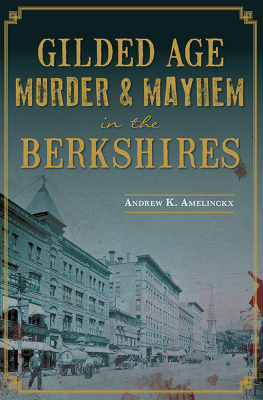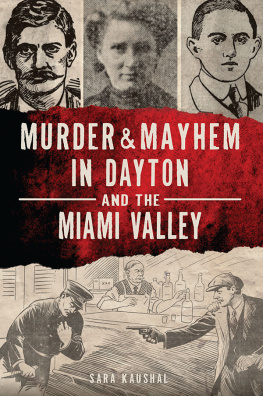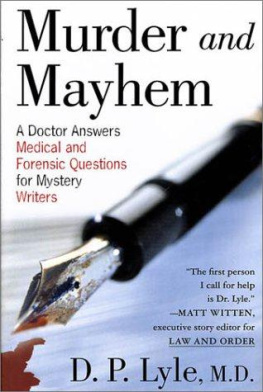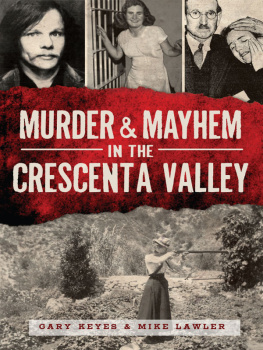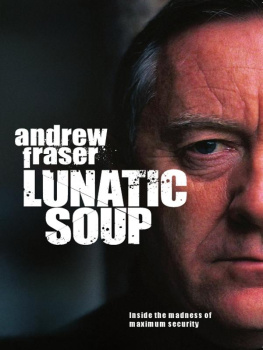Published by The History Press
Charleston, SC
www.historypress.net
Copyright 2017 by Andrew K. Amelinckx
All rights reserved
Front cover, top left: Minnesota Historical Society; top center: Albany Times-Union; top right: Library of Congress, Prints and Photographs Division; bottom: Westchester County Historical Society.
First published 2017
e-book edition 2017
ISBN 978.1.43966.102.4
Library of Congress Control Number: 2017931817
print edition ISBN 978.1.46713.643.3
Notice: The information in this book is true and complete to the best of our knowledge. It is offered without guarantee on the part of the author or The History Press. The author and The History Press disclaim all liability in connection with the use of this book.
All rights reserved. No part of this book may be reproduced or transmitted in any form whatsoever without prior written permission from the publisher except in the case of brief quotations embodied in critical articles and reviews.
INTRODUCTION
The Hudson Valley has always been a culturally important region, inspiring the first truly American art movementthe Hudson River Schooland literature from the likes of Washington Irving. The region has also played an important role in the nations founding and rise to global dominance, from early Dutch colonization to its role in the American Revolution to its importance as the countrys first superhighway following the opening of the Erie Canal in 1825. Thanks to the canal, the Hudson River became the conduit between the agricultural Midwest and Great Lakes and New York City, helping to make America the granary for the world and turn New York City into an important economic, cultural and political center.
But there is a dark side to the Hudson Valley as well, going back to the fateful 1609 voyage of Henry Hudson, an Englishman sailing under the Dutch flag who explored the river that would bear his name. The journey of discovery included kidnappings of Native Americans, killings, drunkenness and the rumblings of a mutiny (Hudson died during a successful mutiny on a subsequent voyage in 1611). From there, it only got worse. The regions history is littered with corpses, killers and crooks. The Hudson River itself was often the most convenient cemetery for cutthroats looking for a place to dispose of their victims remains.
The river snakes from north to south for 315 miles, beginning as a mere trickle in the Adirondacks before widening to 3.5 miles across near Haverstraw, finally meeting the Upper Bay at New York City as a fast-moving and ship-filled estuary. Unusually, its a tidal river, meaning its waters flow both directions, as I can attest from many hours spent sitting on the rivers banks watching the water flow by, sometimes north to south, other times in the opposite direction.
A map of the Hudson Valley from 1897. Lionel Pincus and Princess Firyal Map Division, the New York Public Library. New York Public Library Digital Collections.
This book is separated into three parts, representing the three main geographical areas into which the eleven Hudson Valley counties are typically gathered: the Upper Hudson Valley, which is also known as the Capital District, or Capital Region; the Mid-Hudson Valley; and the Lower Hudson Valley. The exact criteria of the various geographic areas and overlapping regional names are, like everything else in New York, a matter of opinion.
A view of the Hudson River from 1820. Spencer Collection, the New York Public Library.
Part one, From a Trickle to a Roar, includes Albany, Rensselaer, Greene and Columbia Counties. The second part, The Widening Maw, encompasses Ulster, Dutchess, Sullivan and Orange Counties. Sullivan County, while not actually touching the Hudson Rivers shore, is in no uncertain terms part of the Hudson Valley. The county was split off from Ulster County in 1809 and has played an important part in the regions history and economy ever since. The third and final part of the book, Tides and Tribulations, includes Putnam, Rockland and Westchester Counties.
Here are eleven true stories, one for each of the counties in the region I have called home for more than a decade. The stories span three hundred years and include a mix of crimes, some infamous and some all but forgotten until I uncovered them during my many hours of staring at tiny newspaper type on a microfilm machine. All of these tales have something to teach us, and the charactersonce real, living, breathing humanshave been given a second chance to tell their side of the story from beyond the grave.
THE DEVINE MURDER (ALBANY COUNTY)
CONFESSIONS
On August 30, 1925, nineteen-year-old Albert Billy Devine Jr. was awakened by screaming in his familys Central Avenue home in Albany.
Billy, Billy, hes murdering me, screamed Catherine Devine as she burst into her sons room. Blood streamed from her head as she fell across the teens bed, again telling him that she was being murdered by his father, Albert. This wasnt the first time his parents had gone at it. Their violent arguments and physical altercations over Catherines drinking and Alberts dalliances were the talk of the neighborhood. Catherine had a thing for alcohol, and Albert had a thing for the ladies. He often left the house at odd hours of the night without explanation. At one point, Catherine hired private detectives to follow her husband and learned he was seen in the company of an attractive blonde. Albert had taken the woman to a number of roadhouses, where they drank and danced while Catherine sat at home. When Catherine learned what her husband was up to, she decided not to pursue a divorce, fearing it would be too hard on the children. But the fights began to escalate.
Billy noticed that the latest fight was worse than usual. As Albert came charging into the room after Catherine, Billy jumped up and slammed his father into the wall. Albert wept bitterly as he told his son over and over that she had driven him to do it. Grace, the Devines twenty-one-year-old daughter (everyone called her Cuddles), also came into the room. She took her mother to the bathroom to get cleaned up. Billy and Grace drove their mother to the hospital and lied to the doctors, telling them that Catherine had been struck by a car.








